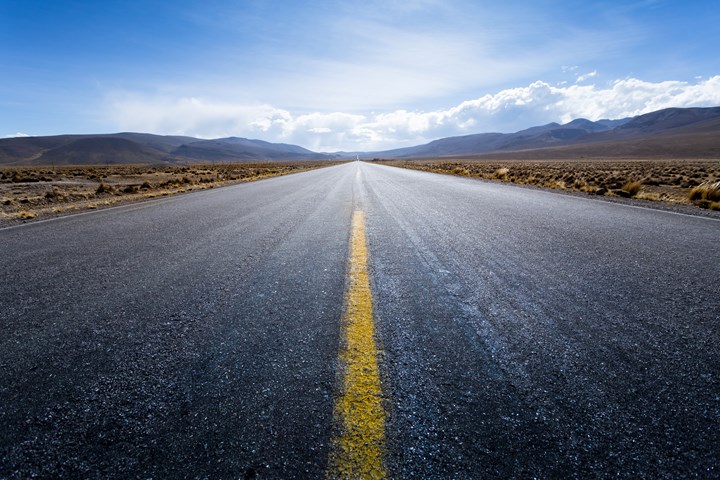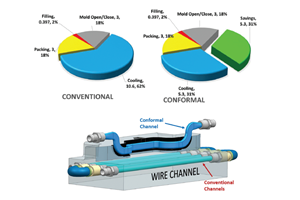Mold Builder Insight Guides R&D Efforts
Results of road mapping workshop identify three areas of technology and education improvement to advance mold manufacturing.

Photo Credit: Getty Images
A mold is a highly engineered manufacturing system, and an integrated machine in a process built upon science and data. This means mold builders must continually invest in better processes and technology to move the industry forward and attract the next generation of moldmaking professionals. Oak Ridge National Laboratory (ORNL) and The University of Toledo, College of Engineering understand this and teamed up for a workshop to gather insights from technology and service suppliers within the mold manufacturing community about the challenges U.S. mold builders face and the areas on which to focus their R&D efforts.
What follows are some of the findings from this workshop that covered advanced manufacturing technology for automotive molds and dies, material innovations, Industry 4.0, machine learning (ML) and artificial intelligence (AI) and workforce development and training.
1. Additive Manufacturing
Regarding AM materials development, participants were asked to identify the most essential material properties/performance needed for tooling applications. Answers included:
- Fatigue (thermal and contact fatigue)
- Hardness
- Wear resistance
- Tool life
- Thermal conductivity
- Dimensional tolerances
- Durability
- Cost
- Application dependency
- Integration of machining
- Availability of “printable material”
- Understanding material characteristics
When asked to share their current challenges with AM feedstock materials, they listed:
- Availability
- Porosity
- Surface finish
- Cost
- Size
- Printing parameters
- Repeatability and variation of properties
- New alloy development
- Understanding downstream needs
- Print readiness
- Configuration
- Sustainability
- No part design guidelines for AM
- Build speed
- Residual stress
- Industry standards
Participants reported the following barriers to use new AM materials:
- Testing standards don’t correlate to reality
- A lack of standard testing parameters
- Cost
- Time
- Accessible database
- Availability of nondestructive evaluation tools
- Powder rheology measurements
- Performance comparison
They believe the market is not adopting AM as quickly because of lead time, reliability and finished mold quality limitations. Reported barriers to using new AM technologies include:
- Complex integration with existing systems
- Data maintenance and visualization
- Cost
- Leadtime
- Reliability
- Learning curve/experience
- Trust of IoT
- Designing for both printing and post-processing needs
- Lack of expertise
- Lack of toughness compared to wrought/solid designs
- Equipment or outsourcing investment
- Lack of success stories/lack of collaboration
- Few materials
- Customer hesitation to adopt a new design concept with AM
- Lack of standards, methodologies for certification and qualification
- Integration of new technology with traditional manufacturing
2. Other Advanced Technologies
Participants noted that the primary drivers needed to move the industry beyond tribal knowledge include automation, training, simulation/analytics, systematic documentation, AI and systems engineering.
Mold builders know that sensors, ML and AL technologies are here to stay because they offer:
- Reduced equipment downtime
- Process validation
- Higher quality parts
- Data
- Longer life
- Predictive tool repair
- Reduced downtime
- Better repeatability
- Higher quality
- Failure prevention
Participants acknowledge that simulation and automation tools play a role in advancing this industry, as they offer:
- Increased analytical DOEs/validations (less trial and error)
- More highly engineered solutions
- Better process repeatability
- More efficient troubleshooting
3. Workforce Development
Education and training continue to be a hot topic, and we are witnessing a revolution in training and development. To fill the skills gap and properly arm the next generation of moldmaking professionals, we need to educate students and retrain and “uptrain” current employees focused on strong engineering and analytical skills and emerging technologies such as AM and alternate manufacturing material options.
From an education standpoint, academia struggles to keep up with technology to make it part of the curriculum and they are not matching industry’s needs with education. Instead, they need to deliver micro chunks of information so that people can pick up the specific skills they need when they need them. Plus, teachers should have real-world experience and get back to basics with hands-on training.
Tomorrow’s mold builder must be flexible, detail-oriented, patient and persistent. In addition, they must understand both design and manufacturing, possess a desire to learn new technology and be a proficient problem-solver.
Related Content
How to Use Thermal Management to Improve Mold Cooling
A review of common mold cooling issues and possible solutions, including 3D printing applications.
Read MoreA 3D Printing Retrospective
A personal review of the evolution of 3D printing in moldmaking throughout the past 25 years.
Read More3D Printing Enables Better Coolant Delivery in Milling Operations
Just like 3D printing enabled conformal cooling channels in molds, additive manufacturing is now being used to optimize coolant delivery in cutting tools.
Read MorePrecision Meets Innovation at IMTS 2024
After attending IMTS, it's clear that the integration of advanced technologies is ready to enhance precision, efficiency and automation in mold manufacturing processes. It’s a massive event, so here’s a glimpse of what the MMT team experienced firsthand.
Read MoreRead Next
Reasons to Use Fiber Lasers for Mold Cleaning
Fiber lasers offer a simplicity, speed, control and portability, minimizing mold cleaning risks.
Read MoreHow to Use Strategic Planning Tools, Data to Manage the Human Side of Business
Q&A with Marion Wells, MMT EAB member and founder of Human Asset Management.
Read MoreHow to Use Continuing Education to Remain Competitive in Moldmaking
Continued training helps moldmakers make tooling decisions and properly use the latest cutting tool to efficiently machine high-quality molds.
Read More






















